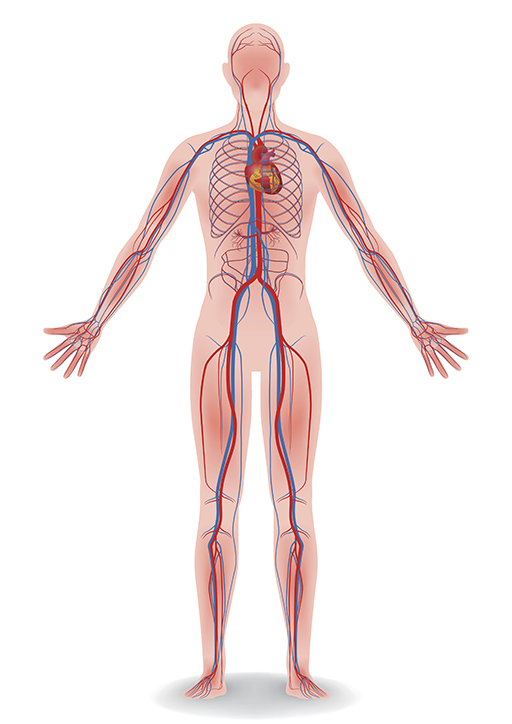1.1 Circulatory system
The circulatory system is made up of the heart and the network of vessels that carry blood around the body.
This system is responsible for delivering oxygen and nutrients to organs and cells and carrying waste products away. The circulatory system also helps to regulate the body’s temperature and keep it in a safe range.
The heart is a muscle that pumps oxygen rich blood through vessels called arteries. Arteries get smaller as they move away from the heart and connect to tiny capillaries that reach every part of the body. Capillaries connect to veins, vessels that take the blood back towards the heart.
Therefore, blood flows from heart→ artery→ capillary→ vein→ heart.
This is called circulation. However, there are two circulations in the circulatory system. The systemic circulation is how blood goes to most of the body. The pulmonary circulation is how blood goes through the lungs to collect oxygen.
When a baby is in the womb, blood bypasses the lungs as these do not inflate until after birth. However, from the moment a baby take its first breath, the circulatory system is interlinked with the respiratory system.

